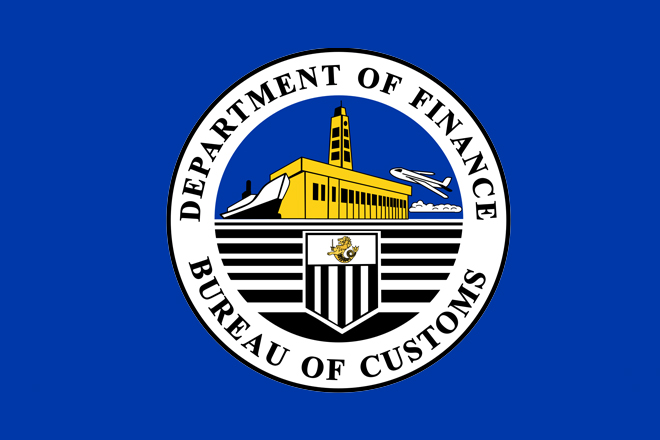Dominguez orders Lapeña to verify import-export data gap with China
December 6, 2017
Finance Secretary Carlos Dominguez III has ordered Customs Commissioner Isidro Lapeña to meet "right away" with his counterpart in the Chinese government to check the narrowing but still significant gap between that country’s registered export volumes to the Philippines and import figures officially reported here.
In a press release by the Department of Finance (DOF) on Wednesday, Dominguez said official trade data show estimated discrepancy between registered Chinese exports to the Philippines and registered Philippine imports from China has been declining but still very large.
The gap was reported at 60 percent in 2010; 57 percent in 2015, 48.7 percent in 2016 and 48 percent in the January-July period of this year.
“I've asked Sid Lapeña to invite his Chinese counterpart to sit down and review the data,” Dominguez had told reporters.
During a recent Executive Committee (Execom) meeting of the Department of Finance (DOF), Dominguez reiterated his directive for Lapeña to meet and coordinate with the Chinese government's customs chief to reconcile the nagging discrepancy in trade figures between the Philippines and China.
The finance chief relayed his order through Customs Deputy Commissioner Edward Dy-Buco, who had attended the Execom meeting on Lapeña’s behalf. "Just remind the commissioner that he should invite the Chinese bureau of customs chief here. You have to reconcile your figures on the import-export data. Anyway, the difference is not anymore 60 percent. It's only 48 percent now, but that's still large," Dominguez said.
In 2010, registered Chinese exports to the Philippines was at $11.56 billion, but Philippine imports from China as reported by the Philippine Statistics Authority (PSA) was only at $4.628 billion, resulting in a trade discrepancy of 60 percent or $6.936 billion.
From January to July 2017, Chinese exports to the Philippines was $17.77 billion, while the PSA reported imports from China at $9.24 billion, or a discrepancy of 48 percent or $8.53 billion.
Compared to the previous years and the same period in 2016, the January-July 2017 trade gap between China and the Philippines has been declining. From January to July last year, China’s exports to the Philippines was $17.10 billion, while PSA reported imports from China at $8.79 billion, or a discrepancy of 48.6 percent at $8.31 billion.
“These numbers, we're not sure if they’re apples to apples. The definitive figure will come out from Lapeña's sitting down with his counterpart and working it out,” Dominguez added.
In 2015, trade data show that Chinese exports to the Philippines was $26.69 billion, against PSA’s records of imports from China of $11.47 billion or a gap of $15.22 billion. In 2016, the gap narrowed, with Chinese exports to the country at $30.35 billion, against PSA records of imports of $15.56 billion or a discrepancy of $14.79 billion.
Lapeña earlier reported to Dominguez during one of the DOF's regular Execom meetings last month that the wide discrepancy between China’s recorded exports and imports to the Philippines may be attributed to the gross misdeclaration or undervaluation of goods in terms of either volume or weight; and the possible use of “consignees for hire,” which leads to goods released to “hidden” traders and not to the consignees on record.
The latter practice allow the importer to evade the scrutiny of the Bureau of Internal Revenue (BIR), Lapeña said.
In both instances—misdeclaration or undervaluation and the use of consignees for hire—benchmarking and the submission of fake documents allow traders to get away with these underhanded schemes, he said. DMS
Latest Videos
- THE UNTOLD STORY EXPERT INSIGHTS INTO THE UKRAINE
- NEGOTIATING A NEW ORDER US RUSSIA TALKS ON UKRAIN
- Ukraine: A Pawn in the Geopolitical Game? Will Trump Intervene?
- US VP VANCE CRITICIZES EUROPEAN DEMOCRACIES AT MUNICH SECURITY CONFERENCE
- UNCOVERING THE WEB OF DECEIT: CIA INFILTRATION OF THE MEDIA
- SHIFTING SANDS: TULSI GABBARD’S CONFIRMATION AND THE EVOLVING GLOBAL LANDSCAPE
- FAUCI SCANDAL: A THREAT TO GLOBAL HEALTH AND DEMOCRACY






